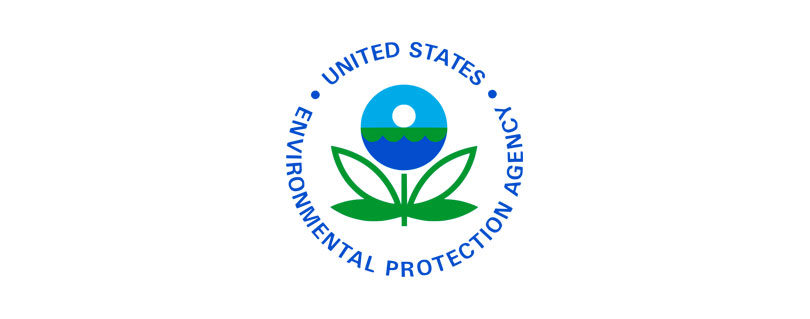EPA Proposes Texas Regional Haze Rule to Protect Visibility in National Parks and Wilderness Areas
Publilshed by the U.S. Environmental Protection Agency (EPA)
DALLAS, TEXAS (April 21, 2023) – On April 19, the U.S. Environmental Protection Agency (EPA) proposed a rule that would withdraw a portion of the existing Regional Haze Best Available Retrofit Technology (BART) Federal Implementation Plan (FIP) for Texas and replace it with a new BART FIP that includes source-specific emission limits for sulfur dioxide (SO2) and particulate matter (PM) on 12 Electric Generating Units (EGUs) located at six power plants in Texas. This proposed action also acts on a pending petition for reconsideration regarding the use of the Cross-State Air Pollution Rule (CSAPR) trading program as a valid BART alternative for 19 states nationwide.
This proposed rule is intended to address Clean Air Act requirements to protect visibility in national parks and wilderness areas, such as Big Bend National Park in Texas and Caney Creek Wilderness Area in Arkansas. More specifically, this proposed rule addresses SO2 and PM BART requirements of the Regional Haze Rule for Texas EGUs. The proposed emission limits are based on conventional, proven, at-the-source pollution control technology that is in place across a vast portion of the existing EGU fleet in the United States. This proposed rule also clarifies that with source-specific BART controls in Texas, the CSAPR trading program can continue to be relied on by participating states nationwide as a valid BART alternative for that pollutant under the Regional Haze Rule.
“EPA is releasing a new Regional Haze Rule that will improve visibility in national parks and other natural settings. We welcome public comments on this proposed rule, and we will carefully consider all comments before taking final action,” said EPA Regional Administrator Dr. Earthea Nance.
In October 2017, EPA put the Texas SO2 Trading Program in place as a BART alternative for EGUs in Texas. In August 2020, EPA affirmed and made minor revisions to the SO2 Trading Program FIP. After further consideration, EPA is now proposing to find that the basis for the Texas SO2 Trading Program as a BART alternative rested on an erroneous interpretation of our BART alternative regulations. The Agency is therefore proposing to withdraw the Texas SO2 Trading Program FIP.
EPA is proposing to replace the existing Texas SO2 Trading Program FIP with a new FIP that includes source-specific SO2 emission limits on 12 EGUs located at six power plants in Texas. The proposed SO2 emission limits would reduce emissions in Texas by more than 80,000 tons per year of SO2. EPA is also proposing to find that our prior approval of the portion of the Texas Regional Haze SIP that addresses the BART requirement for EGUs for PM was made in error given that it relies on the Texas SO2 Trading Program. The Agency is correcting that error by proposing to disapprove that portion of the Texas Regional Haze SIP and proposing source-specific PM BART emission limits for 12 EGUs located at six power plants in Texas. We expect that these sources will be able to meet the proposed PM BART emission limits with their existing PM control equipment.
EPA is also proposing to affirm the current Regional Haze Rule provision allowing states whose EGUs participate in a CSAPR trading program for a given pollutant to continue to rely on CSAPR participation as a BART alternative for its BART-eligible EGUs for that pollutant. The proposed implementation of source-specific BART in Texas, combined with affirming CSAPR as a BART alternative fully resolves issues raised in several petitions for reconsideration received by EPA in 2017 and 2020. Therefore, EPA is denying an August 2020 petition for reconsideration submitted by environmental groups objecting to EPA’s prior denial of a petition for reconsideration of certain aspects of EPA’s September 2017 final rule that concluded that CSAPR remained “better than BART” in achieving visibility goals despite the removal of Texas and certain other changes in CSAPR’s geographic scope.
EPA will continue to work with Texas and all states to ensure outstanding Regional Haze requirements of the Clean Air Act are fully addressed.
BACKGROUND
Visibility-impairing “regional haze” is caused when sunlight encounters tiny particles of pollution (both naturally occurring and human-made) in the air. Regional haze is produced by a multitude of sources and activities which are located across a broad geographic area. These sources and activities emit fine particulate matter and its precursors, like SO2 which react in the atmosphere to form particulate matter that, impairs visibility by scattering and absorbing light. Visibility impairment reduces the clarity, color and visible distance that one can see.
As part of an overall strategy to achieve natural visibility conditions in protected national parks and wilderness areas, the Regional Haze Rule requires states to determine BART for specific categories of stationary sources built between 1962 and 1977. The rule also includes provisions that allow states to adopt alternative measures to BART so long as the “BART alternative” will achieve greater overall visibility improvement. Many states rely on CSAPR participation as a BART alternative for their BART-eligible power plants.
To learn more about this proposal, visit https://www.epa.gov/tx/texas-regional-haze-best-available-retrofit-technology-federal-implementation-plan-and-cross
Connect with the Environmental Protection Agency Region 6 on Facebook, Twitter, or visit our homepage.
###
Read the full article at: https://www.epa.gov/newsreleases/epa-proposes-texas-regional-haze-rule-protect-visibility-national-parks-and-wilderness




